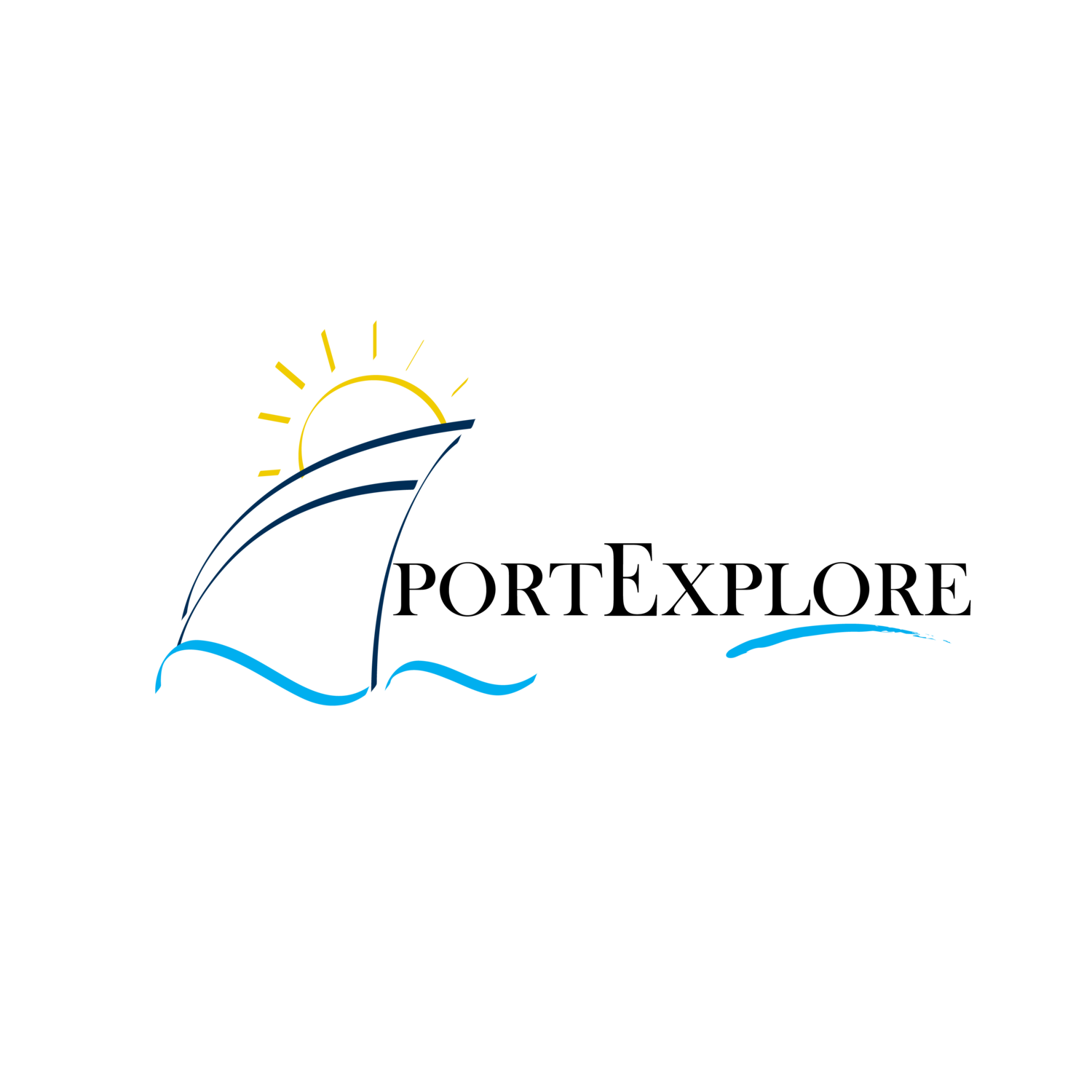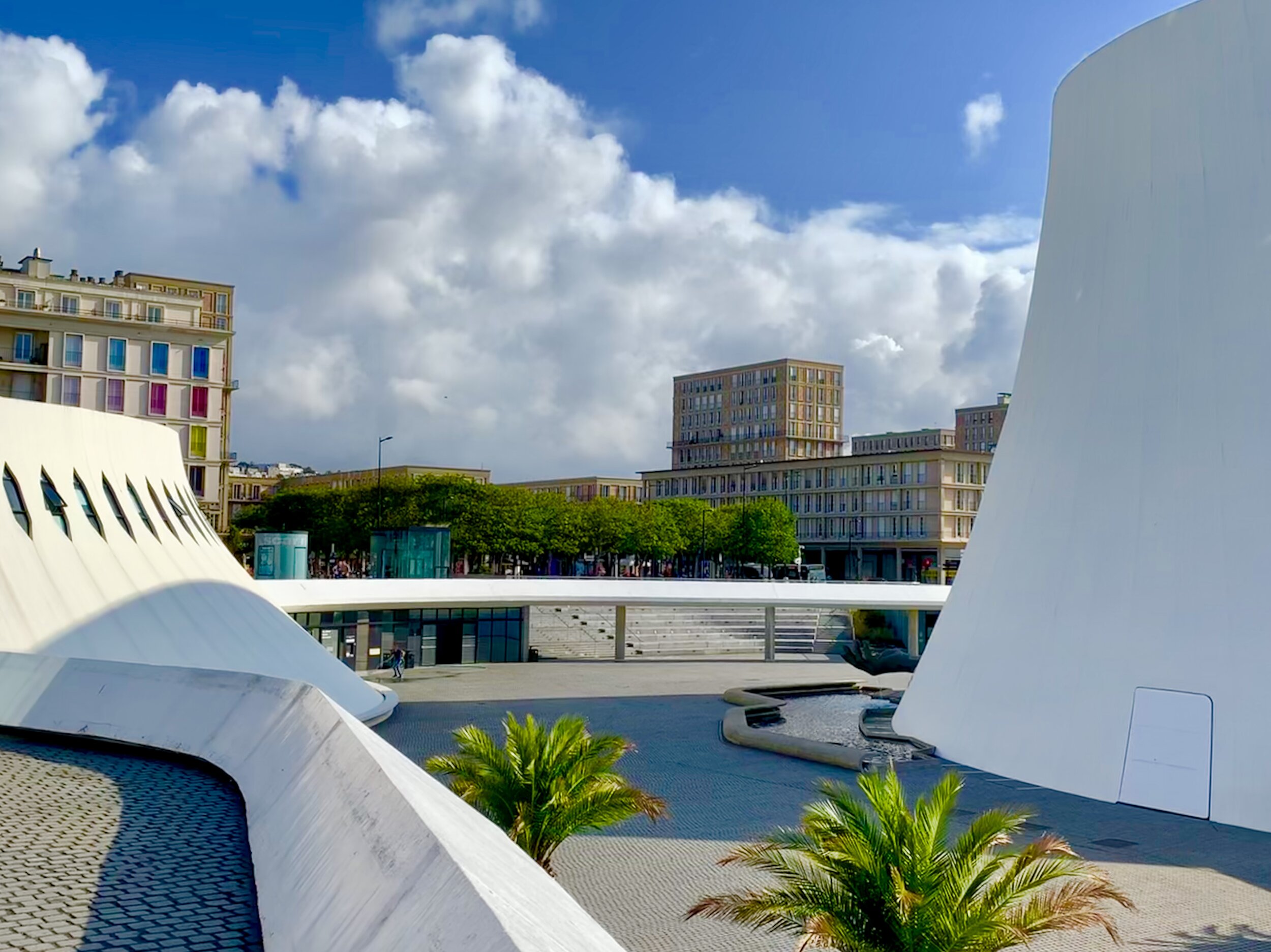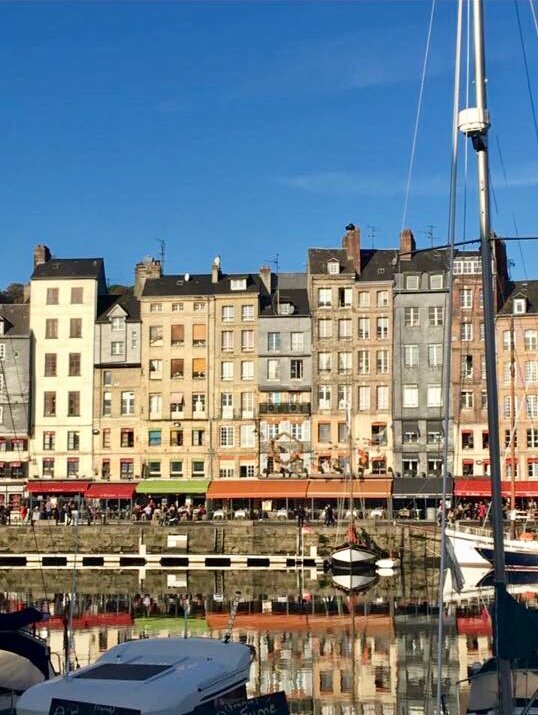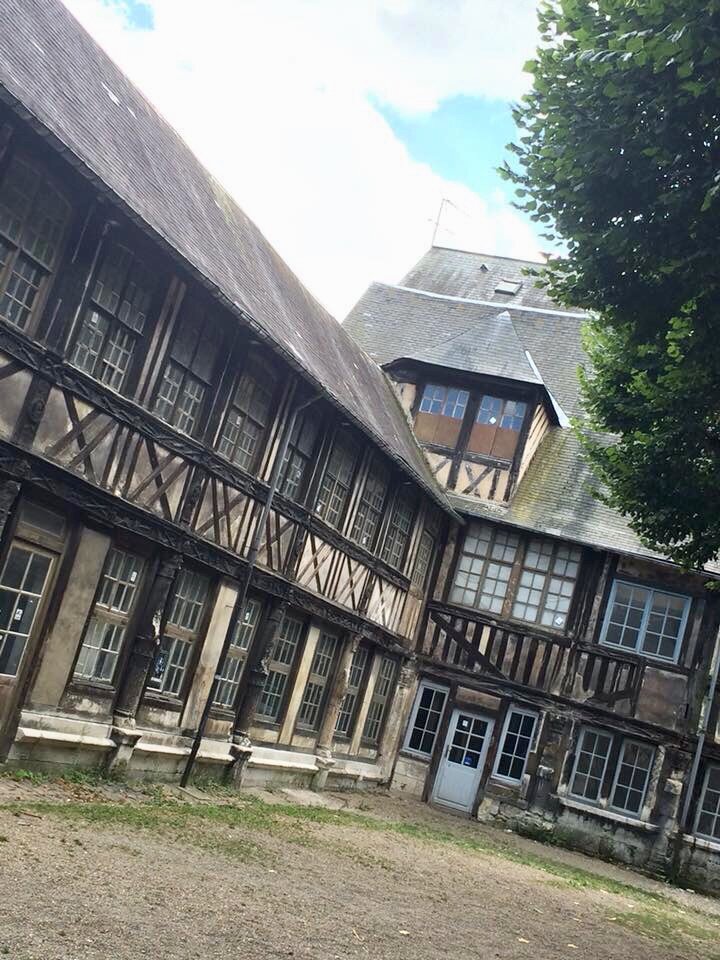Eight Hours Ashore in Le Havre, France - Cruise Port Profile
Le Havre is in the Département Seine Maritime part of the Normandy region, situated on the north coast of France. Cruise Ships dock within walking distance of Le Havre town centre which I think is probably the ‘marmite’ of cruise destinations - with as many people loving it as hating it! It is in Normandy - a region famous for its food, in particular apples. sea-food and dairy products. One of Frances most important deep water ports, Le Havre is situated at the mouth of the Seine river which links Paris to the sea. The reconstruction of the town by August Perret after the catastrophic damage of WW2 is now viewed by many as an outstanding example of urban planning - leading to its position as a UNESCO Heritage Site.
A very short history of Le Havre…
Situated at the mouth of the Seine river which links Paris to the Channel coast, Le Havre were originally settled by the ‘northmen’ or vikings who captured lands in a series of raids from Denmark. The Normans were efficient fighters and, having made a treaty with the King Of France, they invaded England in 1066. Following his victory over King Harold at the Battle of Hastings, William the Conqueror was crowned King of England. His Castle, built using white Normandy stone quarried in Caen, is now known as the Tower of London.
The English Crown held the rights to Normandy until 1259 but the ‘Hundred Years War’ between the French and English meant that fighting continued in the area until the late 15th Century. By then the small fishing village of Le Havre had expanded to a fortified town and an important port, trading in coffee and cotton and a base for passenger ships to the Americas.
Le Havre is called the birthplace of Impressionist Art as the movement is named for Claude Monet’s painting Impression, Sunrise painted there in 1872. Many Impressionist painters such as Eugene Boudin, Claude Monet and Raol Dufy worked in the town drawn to the area by its excellent light quality.
Vincent Ganivet’s Catène de Containers
During WW2 Le Havre was occupied by the German Navy and Allied bombing was severe. Reconstruction followed a grand plan by the architect Auguste Perret and included every part of central Le Havre - it is unusual among many reconstructed cities for its unity and integrity which led to UNESCO giving it World Heritage Status on the town in 2005. Le Havre was the first deep water Container port in France and is now the busiest commercial port in France. It celebrated its 500th anniversary in 2017 which an ambitious display of modern art throughout the town including Vincent Ganivet’s Catène de Containers, a ‘sculpture’ made from multicoloured shipping containers visible from the cruise terminal.
Le Havre is NOT Paris…
Its not even close! Le Havre is tagged ‘for Paris’ and days ashore here are often longer than normal to allow time for this trip -but it would be a very long journey whether you decide to travel to Paris by car, coach or train, the fastest journey takes about 3 hours.
In truth I really feel that Paris is probably a little too far away and too big a city to be worth trying to see on such a short visit. If you really want to visit the best experience would probably be on a private tour or guided coach trip which to take you around the various sights as Paris is a big place! In that case I (unusually!) suggest you opt for the safety and peace of mind of a ships excursion as is such a long journey, with huge potential for delays and holdups. But to be honest unless this is your one and only chance to visit Paris, I really wouldn’t bother visiting at all as you will spend a huge part of the day travelling. I would much prefer to use the day exploring Le Havre itself or visiting some of the other towns and attractions in Normandy, an interesting and beautiful area!
HOW TO GET TO LE HAVRE from your ship…
Unusually two types of cruise use Le Havre - so where you will dock depend on which type of cruise you are on, neither is far from town at all!
RIVER cruises - travelling along the Seine from Paris - dock at Quai de Marseille or the Quai des Antilles, two new quays constructed in the old town docks with a shopping centre & Tourist Information office. The station and tram line are nearby, bike hire is available or it is a 15 minute level walk into town.
CRUISE ships berth closer to the coast, at one of two piers by the Cruise Terminal building at Pointe de Floride. Facilities here include free Wifi, a taxi rank, car and bike rental, shops, a passenger lounge and a Tourist Information office. The town centre is close - a 2km flat walk around the basin, a short taxi ride or a port shuttle (€5 each way 2019). The pleasant walk into town takes you around the harbour past the Semaphore and MuMA or up Rue de Paris to the shopping area and town centre. The train station is a 30 minute walk from the cruise terminal, at the other end of town, close to the River Cruise Terminal.
A DAY IN LE HAVRE…
There is no need to leave Le Havre at all; the port has many interesting highlights although even its greatest fan could not call it pretty!
The post war architecture, built on a grid system (unlike the rambling street of the medieval town it replaced) is not attractive but the cohesive nature of the towns construction and design - from its public buildings and leisure spaces to homes for the town inhabitants - is the reason for its UNESCO award. For speed of construction concrete was the main building material and it can give the town a grey and dismal look, especially on an overcast day. The bright white Le Volcan (Volcano) is Le Havre’s newest and most conspicuous landmark - opened in 1982, its unusual shape houses a concert hall and culture centre designed by Brazilian architect Oscar Niemeyer. opened in 1982.
Many of the buildings are actually more interesting from the inside! The Appartement Temoin is a ‘show flat’ that demonstrates the lifestyle provided for residents by the architect Auguste Perret. It is now a museum where you can see a recreation of the original flats including the first use of modular furniture. The layout was designed to make the best possible use of natural light, and the flats were fully equipped - an uncluttered interior was achieved by the use of sliding doors and a central load bearing structure in each flat. After years of living in rudimentary shelters this must have seemed like a palace to its first residents. Entrance is 3€.
Even if you are not a fan of post war architecture it is probably worth visiting and comparing the two main churches in the town. The heavily restored 16th century Notre Dame Cathedral is one of the last remnants of pre war Le Havre. The western side of the church contains the great organ, given to the town in 1639 by Cardinal Richelieu when he was Governor of Le Havre.
St Joseph’s Church by contrast is a modern building, dedicated to the memory of the victims of the bombings. It was designed by Auguste Perret and is best viewed from inside, especially on a sunny day. Almost 7000 pieces of coloured glass throw changing colours onto the concrete interior and an atmospheric sound installation evokes the sound of fog horns from the ships at sea. I have to admit I was enthralled - a real lesson in not judging from external appearances!
Another structure that makes the most of the clear coastal light is the Musee des Beaux Arts Andre Malraux (MuMA). A beautifully bright and airy space this purpose built gallery showcases the largest permanent collection of Impressionist Art that you will find outside Paris. Artist Raoul Dufy was born in Le Havre and his art is heavily featured -I especially liked his early works showing workers in the Le Havre dockyard. The main collection shows why Le Havre is known as the birthplace of Impressionism and includes many pictures painted locally, by artists including Monet, Gauguin, Renoir and Boudin. It is a real honour to be able to see the paintings in the light that inspired their creation. The whole gallery is over two floors and completely accessible with an education area, restaurant, cafe, bookshop and toilets. Entry is 7€ and it is situated at the far north easterly corner of the harbour, a nice flat half hours walk from the terminal.
If you continue past the gallery you come to the marina area and beyond that the beach. There are boat trips out from the pier for trips around the huge harbour, across to Honfleur or along the coast depending on weather and sea conditions. The 2km beach is mixed sand and pebble, sheltered and safe although not exactly pretty. There are boat, canoe and sunbed rentals, also showers and a freshwater pool at the Club Nautique which is open to visitors. The largest skatepark in France is further along the seafront - you can watch fans of skateboarding, rollerblading or BMX bikes perform acrobatics or even take part yourself - completely free to all!
Shopping in the town is centred in the area around the Market (Places des Halles Centrales), and the shopping area close to the Vauban Docks. Food plays an enormous part in Normandy life and local sea-salt, food and drink make good souvenirs, look for unusual cheeses, salts & saucisson.
OUT OF TOWN…
The long day in port means that some of the other excursions also cover quite long distances. Popular trips, of about 8 hours duration, include the WW2 Normandy Landing beaches and Mont St Michel. Both of these destinations could be visited on your own but for both you might benefit from having a guide with local knowledge with you. You don’t have to use the ships tours - take a look at our affiliate links for Viator tours who we have always found to be very good and reliable.
Picturesque Mont St Michel is the poster boy of Normandy - not least because geographically it really should be in Brittany - which is a huge bone of contention between the two regions! This picturesque medieval town is on the West coast of Normandy in the wide sweeping flat Pays de Dol bay. A steeply sloping tidal island of very narrow, steep, cobbled streets with a UNESCO World Heritage-listed Abbey at its peak. There are great views from the Ramparts - the Terrasse de l’Ouest, has a stunning panorama over the bay. Mont St Michel is beautiful but it can be very very busy and it’s steep steps are definitely not disability friendly! Mont St Michel is about two and a half hours or 220km away by road from Le Havre - the train journey via Rennes and local bus would be too time consuming and unreliable - so your best DIY option would be to hire a car. Most people would use an organised tour - either privately or through the ship due to the distances involved. The new bridge has made it safer and simpler to access the island, it is about half an hours walk or shuttle out to the island from the car park. Tickets must be booked in advance in order to access the island and there will be times of year when Mont St Michel would not work as a cruise excursion from Le Havre due to tide times - so be sure to check carefully.
A trip to the Normandy Landing beaches (Omaha, Utah Gold & Juno) and the museums, memorials and cemeteries of World War 2 would normally be scheduled for about eight hours. There is more information about these below but number of locations and their wide spread across Normandy means that a day will only give you a very broad view. If you have a particular interest in military history and particularly if you have a family connection that you want to trace, then I would strongly suggest a private tour with a specialist guide who will be able to give you specific and tailored information.
The nearest and easiest place to visit on a DIY day out from Le Havre is Honfleur - a picturesque fishing harbour- which is only 14 miles and 30 minutes by car or bus across the Seine estuary from Le Havre. You could take local bus #39, hire a car, take a taxi or hire a bike and cycle there!
Honfleur escaped the worst of the devastation of the WW2 so it is quite quaint some buildings dating back to the 15th century. It's a lovely setting with old buildings, restaurants shops and museums clustered around the Vieux Bassin or old harbour. Boat trips are available from the harbour, along the coast or out into the Seine Estuary. The focal point of the town is the 15th century church of Sainte-Catherine - the largest wooden church in France. The cafes around the harbour are known for their freshly caught seafood. In town, keep an eye out for an interesting museum dedicated to the work of Impressionist painter Eugene Boudin. Just a quick heads up that Honfleur is also a Cruise Port - mainly for River cruises as well as some smaller cruise ships - but as it too is labelled as ‘for’ Paris on a cruise itinerary it is always worth being sure which port you will actually be docking at!
Another simple day out would be to Deauville - a Belle Epoque coastal resort town on what is often called the Parisian Riviera. It is a pleasant drive further west along the Côte Fleurie from Honfleur or an hour by local bus #20 from Le Havre. A popular, upmarket destination since the 1800s, Deauville is famous for its Casino - the grand Casino Barrier de Deauville, as well as attracting the rich and famous to golf courses, hotels, polo fields, race course and, of course, its annual American Film Festival. The towns wonderful wide, sandy beach is backed by Les Planches, a 1920s boardwalk with old fashioned bathing cabins. The town has chic boutiques, an excellent market and elegant Belle Epoque villas alongside the more traditional picturesque Normandy half-timbered buildings.
If you fancy something a bit different a fun way to experience this area from the ship might be on a motorbike and side car experience - take a look here…. (Affiliate link)
There are many other wonderful locations that you might want to visit , all accessible by local transport, car or taxi and are covered in much more detail in our free downloadable e-book available here…
But briefly other places you could consider include…
To the EAST of Le Havre…
Giverny - where Monet lived and worked and painted his garden and waterlilies. The house and gardens are open as well as an art gallery. The gardens are at their best in spring and summer.
Rouen - a wealthy, historic port city and the capital of Normandy. The skyline is dominated by the spires of Cathédrale Notre-Dame, famously painted many times by Impressionist Claude Monet. The cobblestoned Market Square where Jean d’Arc was burnt at the stake is surrounded with medieval half-timbered houses.
Across the Seine and to the WEST of Le Havre
An unusual feature of the D-Day landings is that the Allied Forces moved inland virtually unopposed at some points along the line but were subject to extremely heavy fighting, bombardment and damage in others, so that you will find that some areas were buildings were completely destroyed whereas others that seem virtually untouched.
Bayeux - is one such and its cobbled streets still contain many of the half timbered houses that are common in the area. It is particularly famous for its 70m long Tapestry that tells the story of the Conquest of England in 1066. The tapestry is displayed in a purpose built museum close to the Cathedral The War Cemetery here is the largest British and Commonwealth Cemetery in Normandy.
Caen - capital of the Calvados region was home to William the Conqueror who was buried here in Abbaye-aux-Hommes, fully restored after heavy damage in WW2, along with other important buildings. The excellent Caen Memorial Museum focuses on a theme of reconciliation and describes itself as “a museum for peace”.
Ouisterham - a pretty fishing port on the north coast is joined to Caen by a canal and the L’Orne river. The Pegasus Bridge crossing saw heavy fighting and loss of life in the opening action of the D Day landings.
From Ouisterham you could head west along the coast to visit two of the most accessible D-Day beaches to the port of Le Havre; the beach at Arromanches, centre of the ‘Gold’ landing zone, where you can still see the remains of the temporary ‘Mulberry’ Harbour that the British built for the landings, Omaha Beach and the American Cemetery at Colleville-sur-Mer or the Canadian memorial and Germany fortifications at ‘Juno’ - Bernières-sur-Mer.
There is much more information and a suggested driving itinerary in our free DOWNLOAD. Please note that I’m not suggesting that you should try to visit all of this in one day, but wanted you to see how rich and interesting the area is - to be honest your first choice needs to be between 1066 and WW2!
SHOPPING in Le Havre… Great souvenirs at the gift shop of MuMA which has a good selection of books, prints and jewellery. Also LOHO Le Local Shop on Rue de Paris where they stock an excellent range of locally made items. For edible souvenirs make for the Comptoire des Aromes at Les Halles Centrales.
Cheeses include a wide range of unusual local types such as Camembert, Livarot, Port L’Eveque and softer cheeses such as Neufchatel - often moulded into pretty shapes or wrapped and decorated with flower petals.
Charcuterie such as Saucisson Sec from local pork, is a good buy and travels well. This is matured for longer than a conventional saucisson or salami so it has a drier, less fatty texture.
Sea Salt is available in jars and packets, often combined with herbs or local dairy produce I would highly recommend looking out for:
Confiture de Lait, a sweet spread, similar to Dulce de leche.
Salted Butter Caramels, especially the ones in pretty tins.
Local oils and vinegars - a good buy, particularly at Comptoire des Aromes
Coffee Beans - coffee beans have been traded and roasted in Le Havre since the 17thC - look out for local suppliers such as Ombra or Brulerie.
A word about local drinks made with fruit…
Whether shopping or eating out you will find many local drinks made from locally grown apples and pears…. these fruit based drinks may sound innocuous but it is worth you knowing the differences between them, especially if you are driving as French drink drive laws are extremely strict!
Jus de pomme is apple juice (non alcoholic).
Jus de poires is pear juice (non alcoholic).
Cidre is apple cider, with an alcohol content of 5-8%
Poire is Pear cider (Perry), with alcohol content slightly stronger at 6 - 8 %
Pommeau is a mix of apple juice & apple brandy, alcohol content about 17%
Calvados is apple brandy, with an alcohol content 40% or above!
So sample with care and be sure what you’re drinking!!
EATING OUT in Le Havre… Normandy is renowned for its use of its local produce and has a proud tradition of cooking with pork, apples, dairy produce and seafood. You will find some unusual local dishes on the menu - find out more about them in our e-book - Eight Hours in Le Havre - download your free copy here
I hope you enjoyed reading about Le Havre and the Normandy region - there is loads more information for cruisers in our free downloadable e-book. Let me know your thoughts or any recommendations that you think we should add to the Blog - pop your comments below!
Happy portExploring!
Love
Cathy
xx
P.S. If you’ve found this Blog interesting then I’d love it if you could comment, like or share using the Social Sharing buttons below - I’d love to hear your thoughts!
P.P.S don’t forget to download the Le Havre ebook here…























